| Content | Rupert Neve Designs R6 500 Series chassis is a 6-space, steel rack enclosure that sports XLR, TRS, and DB-25 I/O to work with any studio setup. To ensure your modules are properly powered, the R6 has 150% of the required current, so you'll never be underpowered. It also has a built-in LED display to show current consumption and a double-shielded internal power supply that won't add any interference or unwanted noise to your signal. Rupert Neve is an audio legend. So you know when he designs a 500 Series chassis, it's top-shelf, all the way. Give your 500 Series modules the pampering they deserve with the Rupert Neve Designs R6 500 Series rack.
Genius in the details
With the Rupert Neve Designs' RND R6, there's genius in the details. The R6's double-shielded internal power supply was meticulously designed to avoid magnetic induction in any of its module slots. The power supply is a Switchmode type, and great care was taken to ensure that the frequencies are considerably outside the audible band. There's an internal jumper configuration that makes it easy to link slots in pairs. It's even fitted with variable-position screw holes that slide to accommodate modules that are slightly out-of-spec, which makes the insertion of modules quick and easy. Trust Sweetwater: when it comes to 500 Series racks, the RND R6 is as good as it gets.
Rupert Neve Designs RND R6 500 Series Rack Features at a Glance:
- Supplies 150% of the required current
- LED current consumption meter displays available current
- XLR, TRS, and DB-25 I/O
- Variable-position screw holes make for quick and easy module insertion
- Double-shielded internal power supply designed to avoid magnetic induction in module slots
- Switchmode PSU with frequencies considerably outside audible band
- Internal jumper configuration lets you link slots in pairs
| Rupert Neve Designs' Shelford Channel, over a half century in the making, is the definitive evolution of Mr. Neve's renowned 80 Series channel module technology, updated and refined for the contemporary studio. The Shelford Channel is fitted with Rupert's latest Class A transformer-gain mic preamp, the best-of-the-classics Inductor EQ from the Shelford 5052, a punchy diode-bridge compressor, the alluring analog textures of variable Silk saturation, a state-of-the-art dual-tap transformer output stage with massive headroom, and double the operating voltage of vintage designs. Offering rich tonal options for making audacious statements with your music, along with precision-detented controls for recall, the Shelford Channel delivers the authoritative sonic essence of classic Rupert Neve designs, along with modern versatility.
Input stage and transformer-gain mic pre
Rupert Neve's first new Class A, transformer-gain mic preamplifier in over 40 years makes its debut in the Shelford Channel. Rupert has spec'd this preamp with a direct-coupled transformer input; gain is provided by the custom transformer itself. The proprietary input transformer, and its meticulous integration with the surrounding Class A input amplifiers, plays an outsized role in the Channel's immediately recognizable sonics: punchy and creamy-smooth, with excellent isolation and vanishingly low noise.
The Shelford Channel's front-panel hi-Z instrument input uses the same discrete Class A field-effect transistor with transformer topology as Rupert Neve Designs' acclaimed RNDI; for gain, however, it utilizes the new RN4012 input transformer directly into the mic preamp. This design provides astonishing clarity on hi-Z sources, with substantial low-end weight and silky-smooth high frequencies. The DI also gives you a passive thru output to feed a guitar or bass amp.

- Mic-DI/Line: switches between microphone/direct injection input and line input
- GND Lift: disconnects the audio signal ground from chassis earth
- Signal LED: green indicates Signal Present; red indicates imminent input stage clipping
- Mic Gain: 12-way precision rotary, controls gain from 0dB to 66dB in 6dB steps
- Trim: rotary switch provides further continuous gain adjustment of +/-6dB
- 48V: switch engages phantom power on the mic input
- Phase: inverts the polarity of the signal path (illuminates when engaged)
- HPF Freq: engages a 12dB/octave highpass filter, variable from 20Hz-250Hz
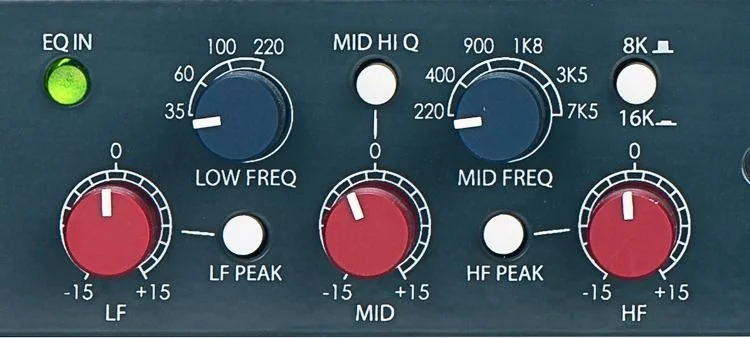
The best-of-the-classics inductor EQ
The Shelford Channel's EQ section is a 3-band, custom-tapped inductor circuit containing Rupert's favorite bands from his vintage equalizer designs. The low-frequency band is primarily based on the 1064 — acclaimed for its creamy, resonant bass. Unlike the 1064, though, the Channel gives you added dimension, punch, and control over your low end by letting you use the LF band as either a peaking or a shelving filter. The midrange band is based on the venerable 1073 and is perfect for sweetening instruments and vocals while nudging them forward in a mix. "Proportional Q" response also makes it ideal for attenuating problem frequencies. The high-frequency band is a hybrid design with the best of vintage and modern attributes. It should be noted that this EQ is in no way a clone; it's a decidedly modern design using components and techniques that simply did not exist in the 1970s — for instance, the use of capacitor-based topologies to achieve sonic richness and enhanced control.
- EQ In: engages all EQ frequency bands except HPF
- LF: adjusts up to 15dB of boost/cut at the selected low frequency
- Low Freq: 4-position rotary switch for selecting LF band corner or center frequency
- LF Peak: selects LF shelving (out) or peaking (in) mode
- Mid Hi Q: selects between a mid-band resonance of 2 (out) or 3.5 (in)
- Mid: adjusts up to 15dB of boost/cut at selected mid frequency
- Mid Freq: 6-position rotary switch selects center frequency of the midband EQ stage
- HF Peak: selects HF shelving (out) or peaking (in) mode
- 8K/16K: selects between an 8kHz (out) or 16kHz (in) center or corner frequency for HF band
- HF: adjusts up to 15dB of boost or cut at selected high frequency
The Super Diode-bridge Compressor
Like the Shelford Channel's inductor EQ and transformer-gain microphone preamp, the diode-bridge compressor/limiter is based on the topologies found in vintage Neve designs such as the 2254. It improves, however, on the early designs by the inclusion of full-wave rectification and a bevy of new control features. Although Rupert's vintage diode-bridge compressors were prized for their warm, punchy response, they were somewhat compromised by imprecise controls, attack-time inflexibility, low headroom, and high noise. The Shelford Channel's Super Diode-bridge Compressor delivers the attitude-packed, "in your face" sound of those classics, but with modern precision and flexibility — which makes it ideal on any source. Full Side-chain and stereo Link features are provided.
- Side Chain Insert Jacks (rear-panel): for fine tuning of compressor operation
- Comp In: engages the Channel's compressor-limiter section
- Threshold: sets level where the compressor "kicks in"
- Ratio: sets compression slope from 1.5:1 (minimal) to 8:1 (heavy)
- SC Insert: inserts rear-panel sidechain insert jacks into sidechain signal path
- HPF to S/C: routes highpass filter into the circuit that compressor uses to determine level
- Gain: for adding make-up gain to compensate for level attenuation lost to compression
- Timing: 6-position rotary adjusts attack/release speed of the compressor
- Link: links the sidechain control of multiple units for ganged or stereo operation
- Pre EQ: changes the order of compressor in the circuit chain
- Blend: mixes the dry and compressed signal for handy parallel compression
- Fast: speeds up both attack and release of the selected compressor time constant
Dual-tap transformer output
The Shelford Channel's output stage serves up the inimitable sound of Rupert Neve's classic designs while providing far more tonal versatility. The dual-tap output for the RN2042 square-core output transformer provides both high- and low-headroom outputs without compromising performance. The high-headroom tap takes advantage of the Shelford's higher-voltage design, delivering a pristine sound without non-linear output-stage coloration at high levels. The low-headroom tap, on the other hand, lets you drive the full voltage range of the Channel to accentuate this non-linear harmonic content — without clipping most pro interfaces. For vocals, drums, guitars, bass, and other instruments, this output lets you hit the transformer's sweet spot, which can inject life into a recorded performance in a way that other effects cannot.
The Silk and Texture controls
The Shelford Channel is packing a secret weapon the classics never had: its output transformer features the Silk Red/Blue and Texture controls from the Portico II Series that let you tailor the harmonic content and tonality of the output stage. By engaging these controls and sufficiently driving your output, you can dial in delectable 2nd- and 3rd-order harmonic distortion (that's the good kind) and saturation of the output transformer, imbuing your tracks with juicy rich thickness (think: 1073 on steroids) — with no danger of overloading the output stage. The Silk Red mode emphasizes harmonic content generated by the source's high frequencies; Blue mode, conversely, works off the low frequencies. The Texture knob controls the amount of added harmonic content. Disengage Silk, and your output is pristine and modern, while retaining Rupert's bigger-than-life transformer sonic signature.
The magical sound of Neve
Rupert Neve is an audio legend whose electronics designs defined the golden age of analog. Those of us at Sweetwater who have had the privilege of working on a Neve 8078 or its predecessors can attest to the fact that Neve's Series 80 consoles were indeed the pinnacle of hand-wired analog mixing desks. Mr. Neve has remained at the forefront of audio-circuit innovation for over half a century, and his current company, Rupert Neve Designs, continues to advance the state of the art with cutting-edge products that sound incredible and intelligently address the challenges of the digital age.
Rupert Neve Designs Shelford Channel Features:
- The definitive evolution of Rupert Neve's renowned 80 Series channel module technology
- A complete channel strip that delivers the essence of classic designs, along with modern versatility
- Input stage and transformer-gain mic pre
- Front-panel hi-Z direct input
- Best-of-the-classics inductor EQ
- Super Diode-bridge Compressor
- Dual-tap transformer output
- Silk and Texture controls
| Simple and elegant, the 5211 is the natural evolution of what is arguably the most famous gear in audio recording history: Rupert Neve’s microphone preamps.
With two channels of the classic tone you know and love, 72dB of gain, sweepable high-pass filters for precise control, and the power of Mr. Rupert Neve’s dual-tap transformers with variable Silk saturation, the 5211 delivers a versatile, flattering, and uncompromising front end for any signal path. In short, it’s everything a mic preamp should be.
What is Silk?
One of the key features of the 5211 is the Silk / Texture control. The Silk circuit was initially developed for the original Portico series mic preamplifiers, and was only a single switch – on or off – that added a specified amount of musical, pleasing harmonic saturation to the unit’s output stage.
Taking this concept one step further, the Texture knob is designed to adjust the actual amount of harmonic content from the source material.
So how does it work? By reducing negative feedback across the output transformer and adjusting this feedback’s frequency response, the Silk / Texture circuit provides the sweet, musical saturation found in Rupert’s legendary vintage designs – but with complete & precise control over the amount of classic tone you want. And when the level is driven to the edge of its headroom, the Silk effect is multiplied.
Why a -6dB Output?
Complementing the Silk circuit is the custom-designed output transformer from the renowned Shelford Channel, which uses Rupert Neve Designs’ unique dual-tap output topology. This offers both full-headroom (+26dBu) and -6dB outputs, allowing the engineer to drive the unit fully into classic transformer saturation without clipping converters and other devices later in the chain.
Unlike the Shelford Channel, which uses a mic input transformer for a more vintage topology, the 5211’s input is fully transformerless, maximizing signal clarity direct from the microphone. Combined with the more extreme saturation from both variable Silk and the custom output transformer’s lower-headroom tap, the 5211 is capable of producing tones ranging from thick & warm to breathtakingly delicate & clear. It’s the best of old and new alike.
MAXIMUM INPUT LEVEL
@ 1 kHz: +26 dBu
NOISE
- Un-weighted, 22 Hz - 22 kHz, 150 Ohm input termination
- Line Out (Unity Gain): -104 dBV, -101.9 dBu
- -6 dB Line Out (Unity Gain): -109 dBV, -107 dBu
- Line Out (+30 dB Gain): -98 dBV, -96 dBu
- Line Out (+66 dB Gain): -66 dBV, -64 dBu
EQUIVALENT INPUT NOISE (EIN)
-128 dBV, -126 dBu
FREQUENCY RESPONSE
-0.2 dB at 10Hz, -2.9 dB at 120kHz
MAXIMUM OUTPUT LEVEL
- 1 kHz: +26.5 dBu
- 20 Hz to 30kHz +26 dBu
TOTAL HARMONIC DISTORTION AND NOISE (WITHOUT SILK)
- 1 kHz, +20 dBu O/P level, no load 0.0015%, typical
- 20 Hz, +20 dBu O/P level, no load less than 0.02%, typical
TOTAL HARMONIC DISTORTION AND NOISE (WITH SILK ENGAGED)
- TEXTURE @ min, 100 Hz, +20 dBu O/P level, no load: 0.03%, mostly 3rd harmonic
- TEXTURE @ max, 100 Hz, +20 dBu O/P level, no load: 1.5%, mostly 2nd harmonic
POWER CONSUMPTION
35 W (Max)'
PRODUCT DIMENSIONS
19” W x 1.75” H x 7 ⅝” D
SHIPPING WEIGHT
11 lbs. (5 kg)
SHIPPING DIMENSIONS
23” W x 15” D x 7” H (58.4cm W x 38.1cm D x 17.8cm H) | Whether you’re tracking, mixing, or just listening to music, your headphone amplifier is as important to the final sound quality as your headphones – yet the world is full of headphone amps with compromised sonics, headroom, and power. To address these shortcomings, Rupert and his team at Rupert Neve Designs developed the RNHP.
Based on the headphone output circuit in the 5060 Centerpiece Desktop Mixer, the RNHP is a dedicated 24V reference-quality headphone amplifier with +4dBu balanced line, unbalanced RCA and 3.5mm (1/8”) inputs – each specifically calibrated for optimum level and impedance – and housed in a rugged, VESA-mountable steel chassis.
Dedicated vs Integrated Amplifiers
For much equipment, the headphone output is an afterthought. Most products with integrated headphone amps have large feature sets, small footprints, and relatively low price points. This leads to compromised power and audio quality of the headphone amplifier itself, which can lead to a number of issues in real world usage such as low headroom, unreliable performance, and a lack of focus.
The RNHP was made to accomplish one simple purpose: making any headphones sound their best. As a dedicated design, the RNHP is tailored to deliver extremely high quality, powerful amplification, with precise calibration for any source input. This exceptional level of quality can be the difference that inspires an artist to give their best performance, lets an engineer make better choices in mic and placement, gives a mix engineer reliable translation of EQ and dynamics adjustments, or lets a music listener appreciate the full depth and detail of a recording.
MAXIMUM INPUT LEVELS
- “A” XLR I/P: +22.8 dBu @ 1 kHz
- “B” RCA I/P: +14.7 dBu @ 1 kHz,
- “C” 3.5mm I/P: +3.3 dBu @ 1 kHz
OUTPUT POWER
- As measured with typical headphones, Z=44 Ohm: 3.617 VAC RMS @ 1 kHz = 300mW RMS.
- 16 Ohm typical Load: 1.933 VAC RMS @ 1 kHz = 230mW RMS
- 150 Ohm typical Load: 5.108 VAC RMS @ 1 kHz = 175mW RMS
OUTPUT IMPEDANCE
.08 Ohm @ 1 kHz, 16-150 Ohm load, 0 dBu input
FREQUENCY RESPONSE
+/- .2 dB from 10 Hz to 120 kHz
NOISE
- Measured with typical headphones, Z = 44 Ohm, BW 22 Hz - 22 kHz.
- “A” XLR Input: -101.9 dBV,
- “B” RCA Input: -100.9 dBV
- “C” 3.5mm Input: -88.8 dBV
DIMENSIONS
6.5” wide x 4.6” deep and 1.9” tall
POWER SUPPLY REQUIREMENTS
24VDC @ 0.25Amp (6 watt) minimum. Use with supplied power adapter, as this has been carefully selected for best output power and noise performance. May be used with a properly configured 24V battery as well. | The versatile amplifier for powering all your entertainment.
- Enjoy high-fidelity performance with 125 Watts per channel
- Power your bookshelf, floor-standing, in-wall, and in-ceiling speakers
- Stream everything you love with the Sonos app and AirPlay Connect your TV to create the ultimate entertainment system
- Amp is built to last and improve over time
Upgrade your wired speakers
Connect everything from your turntable and stereo to your wired speakers to enjoy vinyl, CDs, stored audio files, and streaming. You can even power outdoor speakers and expand your Sonos system to the backyard.
Amplify your TV experience
Enjoy stereo sound for shows, movies, and video games when you connect Amp to your speakers and TV. Wirelessly add a pair of Sonos One surrounds for immersive home theater.
Designed to keep cool
The rack-mountable design features a specially developed heatsink for optimized airflow and heat management.
Key Specs
Continuous Watts x Channel @ Ohms: 125 x 2 x 8
Input(s): Ethernet, HDMI, RCA
Audio
Continuous Watts x Channel @ Ohms: 125 x 2 x 8
Total Power Handling: 250 watts
Number of Channels: 2.1
Impedance: 8 ohms
Amplifier Class: D
Features
App-Controlled: Yes
Featured Streaming Services: Apple Music, Pandora, Spotify, YouTube
Wi-Fi Built-in: Yes
Dimensions: 2.52" x 8.54" x 8.54"
Weight: 4.6 pounds |
Uniti Atom is a beautiful, compact multi-source music player that will seduce you with its amazing sound quality and outstanding feature-set. Its 40-watt integrated amplifier and high-resolution music streaming capabilities will fill your home with stunning high-fidelity sound. Uniti Atom is perfect as a high-end main system or even for use in the kitchen or study, where space is at a premium. Just add speakers. The Naim App for iOS and Android combines all of your music sources in one place, making Uniti Atom even more appealing.
Upgradeable Performance
In true Naim style, the new Uniti Atom can be upgraded with an external power amplifier, such as the compact NAP 100. You can also add a subwoofer for deeper bass extension. And for those with extensive CD collections, you can add a Uniti Core music server to your system to store and stream thousands of albums to your Uniti player and back up all of your music in one place.
Specifications
Connectivity
Audio Inputs
2 x Optical TOSLink (up to 24bit/96kHz)
1 x Coaxial RCA (up to 24bit/192kHz, DoP 64Fs)
1 x HDMI ARC
1 x RCA
2 x USB Type A socket (front and rear)
Audio Outputs
1 x Stereo power amplifier
1 x RCA sub/pre output
1 x 3.5 mm headphone jack
Amplifier Output: 40 W per channel into 8 ohm
Dimensions (WHD): 9.65" x 3.74" x x 10.43" (245 mm x 95 mm x 265 mm)
Weight: 15.43 lb |


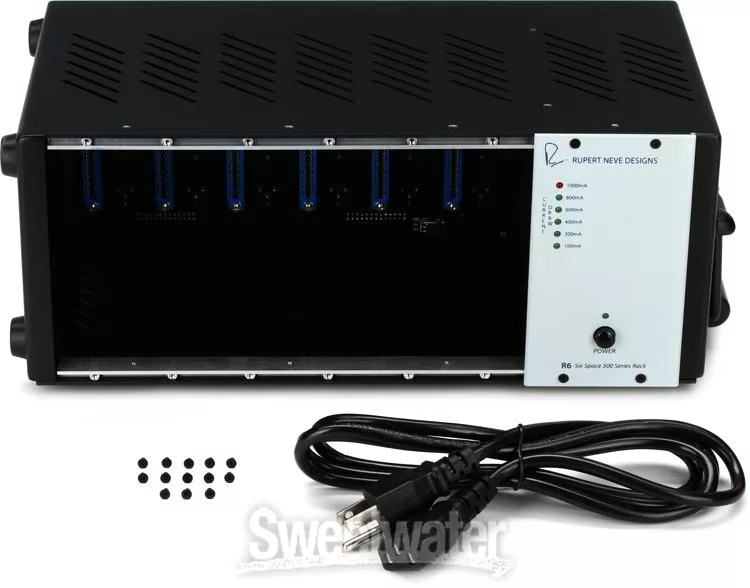
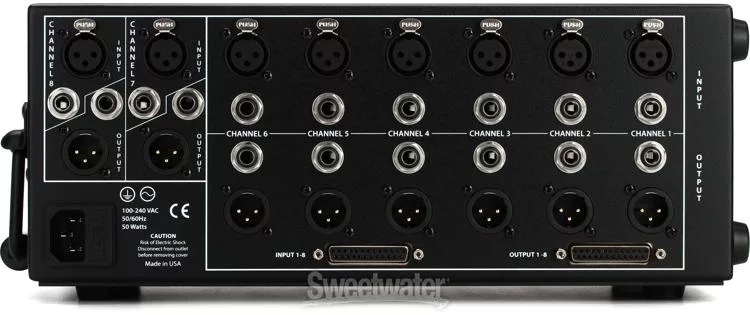

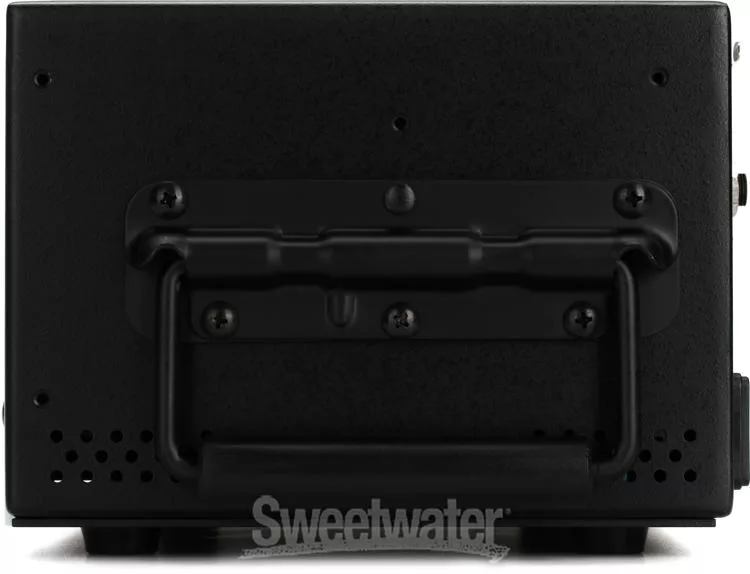







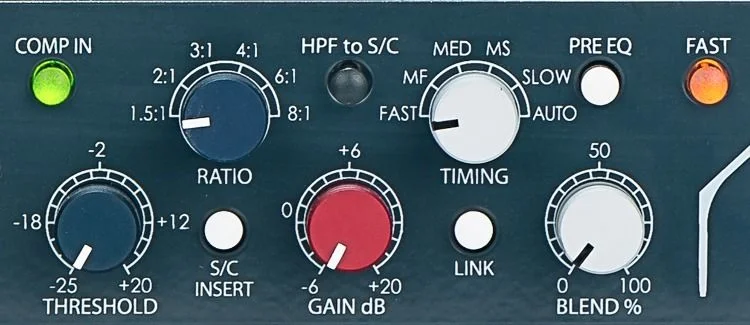






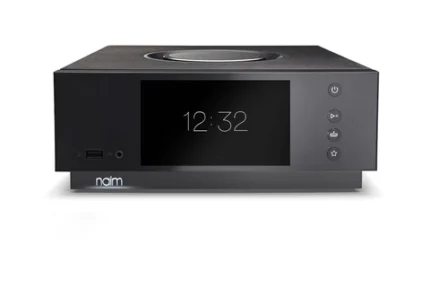
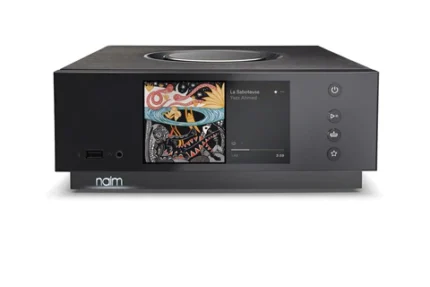





Reviews
There are no reviews yet.